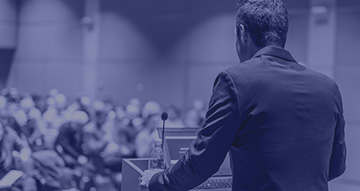
Leadership positions in an organisation’s hierarchy, while much-coveted, come with their set of challenges. Exuding ‘executive presence’ includes, and goes beyond, reassuring the top brass of the organisation’s vision in your team’s projects and keeping subordinates inspired, while being true to your own potential. These factors take on multifarious meanings in a virtual workplace, where it is more difficult to exercise ‘presence’ and garner ‘influence.’ This fictionalised case presents the dilemmas of an Indian firm around productivity and effectiveness in a newly-remote working environment. Two experts weigh in.
Case Study:
In March 2020, India went into a lockdown as a result of the COVID-19 pandemic. Multinational companies, corporates and start-ups had to shut their offices and put together policies for remote work. Many organisations had never allowed their employees to work from home. Among these was Findx Pvt. Ltd. (hereafter, Findx), a mid-sized consulting firm based in Bengaluru, India.
Anoop Kumar, who headed the content team at Findx, was anxious. Bengaluru had reported its first case of coronavirus, filling India’s start-up capital with fear and uncertainty. Despite being among the first organisations to announce a ‘work from home’ policy for its employees in the wake of what the WHO had just announced as a ‘global pandemic’, some mid-level employees at Findx, Kumar included, were worried. Reaching their team’s targets and their own growth parameters in such uncharted territory was quite a challenge.
As for Kumar, he was a promising employee, hired as a content writer in 2018. He showed great initiative and unconventional thinking right from his first few months at Findx. He rose through the ranks and was managing his own team in the content division by his second year. As he led consecutively successful projects, Kumar was awaiting his evaluation to the role of director of the content division when the lockdown was announced.
He was a good listener who made compelling presentations, and as a result, was often sought out by other departments like sales and marketing. His foresight ensured that they averted crisis on most occasions, and his calm demeanour helped manage any that occurred. Furthermore, with his tall frame and muscular build, he towered over others, often being the centre in a group. He also carried himself well regardless of the time, whether he was making a presentation at 8 a.m., accompanying clients to dinner, or pitching a new strategy to the founders; he impressed everyone he met.
At the office, the open-plan seating of the floor meant that Kumar could keep an eye on his team, an arrangement that also enhanced their individual and collective productivity, where they could bounce ideas off each other or call out to a colleague or superior whenever required. Through this hyper-connected and collaborative approach, Kumar had been able to push his team members as per their individual dispositions, thereby bringing out the best in each of them.
But working from home posed challenges that Kumar had neither foreseen nor prepared for. In the office, the workforce had access to state-of-the-art hardware and high-speed internet, both prerequisites in their line of work. Kumar was concerned about how these conditions could be replicated at the employees’ homes. He also found it difficult to keep track of his team and their deliverables. While he made himself available to them round the clock, he couldn’t quite manage the projects between the numerous calls with team members, clients and bosses. Speaking to subordinates and superiors through video calls, being reduced to boxes on the screen, was taking a toll on him; he felt unnoticed and disconnected from everyone and everything. The previously inspired and productive content team was no longer efficient; members were missing deadlines and lacking ideas. As a result, the determined timelines of crucial projects suffered.
That wasn’t all. Earlier, Kumar was always on the frontlines of social media strategy for the organisation, regularly coming up with ideas that went viral, which were then taken up by others in the industry. But he was now repeating old strategies, and even slacking on his initiatives like the weekly newsletter. Concerned by Kumar’s predicament, his own manager, Manas Reddy, broached the matter with him on a call:
“What is going on with you, Kumar? Your projects were always appreciated by the clients and your deliverables came before the deadlines. But now, you seem so unfocused and unmotivated. This is the case with many members of your team as well. Despite the pandemic, several members of your team have already quit, while a few others give the impression that they may be considering doing so. Are you feeling the pandemic blues? Look, I understand, we are living and working through unprecedented times, but this is not the high achiever that I knew and was proud of! Please tell me what you’re going through, and I will do my best to help you.”
Kumar took a deep breath. He responded:
“I don’t know what to tell you, Reddy. I had concerns about working remotely, but I never expected it would be so much worse than I had feared. Earlier, I could imagine project pathways beforehand and prepare for anticipated challenges in advance. I could communicate with people...understand their vision and their challenges...and translate them into sizeable pieces of actionable tasks. I felt inspired and could, in turn, inspire my team. I felt validated, that everything I did mattered. But working virtually has just been too tough for me. I find it exhausting to follow-up with each member through individual calls and it seems that my entire working day is spent in asking for and relaying updates. I am working more than I ever did, achieving much less, and getting no credit whatsoever. And meetings, which were otherwise a quick and weekly phenomenon, have become so long-drawn and cumbersome, they are almost like the infamous commute of Silicon City, which now seems better in comparison to the burnout from working and leading virtually. I wait my turn to speak and contribute in these meetings, but I am often ignored in the meaningless cross-talk. All this leaves me with no time, energy or opportunity to ideate, strategise, or be at all effective.”
Reddy was speechless. Certainly, he was facing some of these challenges too. He also wanted to support Kumar, who was much loved by his team (at least pre-COVID-19), and always gave them the right mix of independence and guidance, and was now questioning his own leadership abilities.
Questions:
- How should Kumar adapt his leadership skills and executive presence to be effective in a virtual workplace?
- How can Reddy provide guidance and assistance to Kumar to combat his and his team’s remote-work fatigue and boost their productivity?
Commentary:
The experts bring in their perspective as they respond to the key questions the case poses.
Expert Opinion: Gayatri Das Sharma, Co-founder, Timshel Coaching & Consulting
The scenario presented in the case and the challenges associated with working and communicating remotely have come into focus over the past year. Large and small organisations, teams, and leaders, have been compelled to change how they conduct their business on a day-to-day basis. And the challenge, primarily, is that a virtual workplace is a new way of operating.
My advice to Kumar would be that leading a virtual world requires the exercising of a different set of muscles, which will seem painful and uncomfortable to start with, but will gradually become easier. Beyond one’s physical appearance, a couple of elements add to a person’s executive presence.
Replace Transactional Interactions with Deeper Connections
Kumar is struggling with a feeling of not being seen, heard and acknowledged in a virtual workplace, thus making him question his relevance and ability to add value and make a difference. Overcoming this would require Kumar to think of the many ways of engaging with his colleagues so that there is a feeling of connection and trust.
One-on-one conversations are a great way of enabling open dialogue and creating a level of intimacy that will help go beyond transactional work conversations. Team meetings, structured in a manner that 10-15 minutes are set aside for banter, with space to do a check-in before focusing on business-related discussions will be a better approach. Unfortunately, in a virtual setting, people log in at 11.29 if the call is scheduled for 11.30 and drop it right on time at 12.30 if that is when it was scheduled to end. By intentionally creating time, colleagues would be able to connect at a human level, sharing the highlights and trials of their day.
Being acknowledged by superiors is extremely important, however a large part of this need gets fulfilled by the teams that we work with, as being a leader can be very lonely. It would help Kumar feel more connected if he were to put himself out there, share his vulnerabilities with the team, and acknowledge them.
Strike a Balance
Managers spend a lot of time troubleshooting through reviews, updates and strategies. Kumar, too, is doing this by spending a lot of time on one-on-one conversations. It is possible that he is feeling like a policeman; he seems to be a very creative person, and that seems to have taken a backseat. Kumar needs to create a balance—do things which are creative and forward looking, because that is the nature of the business—but also keep himself and his team accountable.
A simple solution would be to work together virtually in real-time. For instance, Kumar and his team could get on to a virtual call as they go about their individual tasks, while keeping their video on and audio muted. In this way, they can access each other in their collective space without needing to send calendar invites, and message each other on the chat window whenever they need to brainstorm or problem-solve.
Accept, Don’t Normalise
The pandemic has changed how most people need to work and lead. I was surprised that Reddy was made aware of Kumar’s struggles only after things moved so far. Leaders need to be more intentional in checking with their people and leading through the pandemic has been the perfect opportunity for them to create personal connections with their stakeholders. One of the factors that contributes to trust is intimacy, which is knowing your people and showing them that you care for them, asking them what they need and supporting them through it.
After being made aware of the extent of Kumar’s challenges, Reddy should make it a point to regularly check-in with Kumar. Kumar seems to have got caught up in the draft of days feeling the same, and lost sight of his abilities in the process. Furthermore, he has admitted to feeling demotivated, unrecognised, uninspired; the foremost way that Reddy can help him would be to listen to him and encourage him to unburden.
Reddy should share his own vulnerabilities with Kumar and others. Pain and vulnerability are other elements of executive presence, and when Reddy can share this with his team, he invites them to be authentic too. There are two aspects to this sort of approach. Firstly, it acknowledges Kumar’s feelings (and those of others like him); and secondly, it puts into perspective the fact that Kumar is not alone in what he is feeling and experiencing.
Help Yourself Before You Can Help Others
When human beings are under a lot of pressure, they surprise themselves. In March 2020, when the first lockdown was announced in India, it came as a war cry, where leaders promised to rally together through the crisis and ensure that people did not get laid off. As a result, there have been some remarkable performances.
At the same time, a major part of living through a pandemic has meant activating the survival mode. Fatigue has set in because what was assumed to be a minor altercation has turned out to be a situation without an end. And it is important to recognise that the initial high adrenalin approach is not sustainable. And just like how you are advised to put on your safety mask first before helping others in the event of an emergency on an aircraft, Reddy needs to understand that Kumar needs that little bit of oxygen supply and help him articulate what form that oxygen supply would take. Is it taking a bit of a break? Is it working on something new that excites him? Or, is it having more resources? What is it that will make him be himself? Kumar, too, needs to accept this and help himself before coming to the rescue of his subordinates, his team, and his organisation.
Be Who You Are
When you operate from a place of gratitude and compassion, it evokes resilience. While these buzzwords are now being talked about, I think they are not being talked about enough. At an individual level, it could mean taking a step back and identifying the two or three things that one needs to do on an ongoing or even daily basis, to act as little sparks of happiness, joy, meaning and purpose. It also means taking a break, a regular pause, before reaching a state of complete breakdown or burnout. Simple hobbies like gardening, cooking, or listening to music can help people reconnect with themselves.
Kindness to self and others through these unprecedented times will help to make sense of the new contexts that come from this transition.
5 Ways to Sail through this Transition
- How you show up: The clothes you wear, how comfortable you are in them, and how you carry your hair, or any other accessories, adds to your physical appearance. And if you are comfortable with these, you might stand up taller, even if it is a virtual meeting.
- Structure what you have to share: Approach every meeting, whether it is an ideation circle or business review, with the requisite preparation and structure. It is an extension of how you show up, because it also conveys that you value the time of all the attendees, including yourself.
- See and be seen: Ensure that you have your camera on, whenever bandwidth permits. This makes a huge difference to how you approach the conversation, and as a result, how others see you.
- Connect and engage: Acknowledge each person who enters the meeting and keep a buffer of 5-15 minutes before a meeting, where people are free to catch up with one another.
- Every voice matters: For voice-only calls, pay attention to your pitch, and the speed and tone of your voice. Stop and ask for understanding; invite people in to share their opinions; and ensure that everybody’s voice is heard. Structure yourself and your calls such that voice-only calls do not become monologues.
Expert Opinion: Professor Mihir Mankad, Global Communication Expert and Professor of Practice, Leadership Communication
Executive Presence is about evoking one’s authentic, energised, relaxed and productive self, in everyday and challenging situations. It is also about influencing others seamlessly and by example. Eighteen months into the COVID-19 pandemic, Zoom fatigue has set in for many. Increased work demands and the loss of connection have impacted workplace well-being, and Kumar is not alone in experiencing workplace stress during this time. Video conferencing and virtual meetings, however, offer some incredible tools and conveniences, and an optimistic and adaptable mindset is needed to first survive the new reality, and then to thrive in it.
This case response is broken up into three parts: Cope, Captivate and Scope. The first two largely apply to Kumar, and the last is relevant to both Kumar and Reddy.
Cope
Kumar’s situation is one of lost presence, and he can revive himself, his team and his stakeholders through reflection and action. The first goal for Kumar is to align with purpose. Presence is created through natural motivation and energy. If Kumar is feeling demotivated, then he needs to reflect, refocus and recalibrate, ideally by taking some time off. During this time, he must ascertain whether he still feels a fit with the organisation’s mission and culture. If the answer is yes (which we will assume in our case), he needs to come back with a rejuvenated mindset and a shared purpose.
Captivate
Creating a connection through communication can elevate executive presence. Three important principles underlie strong communication: knowing how much to say, what to say, and how to say it.
a) How Much to Say
- Speaking speed: Kumar can push himself to plan and prepare for more concise and precise communication. Effective and efficient meetings, the need of the hour online, need planning. Most people are not aware of how many words can fit in a given amount of time. Knowing that the average speed of speech is about three words per second may allow Kumar to better plan for his interventions and be more compelling.
- Teleprompt for impact: A teleprompter has typically been under the purview of television anchors. But now, simple apps and sites like cueprompter.com allow you to create your own teleprompter for times when you want to send a precise message. These tools also allow you to seamlessly switch between a teleprompter and unaided speaking to be more effective communicators.
b) What to Say
- Sharp “logos”: The logical appeal of one’s talk or presentation is important. Kumar needs to carefully consider the purpose of each meeting, which will signal efficiency and boundaries to the team too. This is a shift from the current scenario in which he tries to be available at all times, at the cost of his own motivation. Also, the art of communication lies not only in knowing what to say, but also in awareness of what not to say. Kumar should remember both aspects in his interpersonal communication with his team. There is a greater need than ever, with shorter attention spans, to be more concise and precise for compelling communication.
- Sound bites: Kumar can think of drafting some “sound bites”, phrases or sentences in a long verbal address that encapsulate the essence of what he wants to say. These wake up your speakers to the headlines of your talk, and provide a great guidepost as you plan your script to be heard, versus to be read. Doing so allows you to have greater gravitas, and in turn, a more inspiring presence.
c) How to Say It
This is what Aristotle described as “pathos”, or the emotional appeal of your communication. It includes everything you do to resonate with and inspire your audience. Here are some tools to sharpen your pathos, including in an online environment:
- Humanise the camera: This involves making the same connection while speaking into your computer as you would with someone right in front of you. It is natural to lose connection when talking to an inanimate object (your computer), and this problem is exacerbated when sharing your screen. Towards this, three suggestions:
i) Locate the eye of the camera on your computer, especially when you are using multiple screens, and imagine a light magnetic pull to this spot. An arrow sticker may help draw attention to the camera.
ii) Imagine you are speaking to someone, ideally somewhat familiar and a bit older. The tone and reverence that this will involve is ideal.
iii) Finally, try to get the camera to your eye level, including by stacking books below your laptop or device. You will surely make a better connection speaking to someone looking directly at them rather than looking up or down on them.
- Channel the virtual channels: Online platforms allow for effective use of breakout rooms, polls and chats. Each of these trumps their equivalents in a non-virtual environment. For example, polls tend to be more accurate online versus a live situation where there may be greater pressure to conform to the norm. Breakout rooms can happen instantaneously in comparison to physical places where people would need to move, displace and find adequate private areas for these tasks. Finally, chats cannot happen in the same instantaneous way as they can virtually. Recognising the power of these channels and leveraging them can break up and brighten meetings, making them more productive, dynamic and efficient. Kumar should feel excited about the possibilities here.
- Enable and leverage video: In virtual platforms, the face is magnified on the screen. One can notice expressions with even more detail. Kumar can push himself to believe that he can have as much or greater leadership impact through a policy of keeping cameras turned on, at least for his teams, and for as much as he can control with others. Additionally, popping in and out of the shared screen option can signal to the audience that you want to promote inter-activity as much as possible.
Scope
As leaders, both Kumar and Reddy need to recognise the challenges of virtual work, for themselves and their teams, and invest in events and technologies that can further team productivity. Two suggestions in this regard:
a) Design a Motivating Space
Enable tools that can further productivity and motivation. For example, invest in a large monitor, as well as high quality video and audio inputs and outputs. This may incur an extra expense, but employees will surely appreciate and utilise these tools. Giving employees a say and flexibility in how they want to design their own space can also help. Additionally, green screens could be provided by the company. These sharpen both the silhouette of the speaker and their background, and serve to hide what’s behind the screen (for example, kids playing) to enable a seamless work-from-home environment.
b) Foster Open and Personal Communication
With team members working from home, an ideal scenario is to create occasional and safe in-person or virtual retreats where people share to connect. One idea could be to organise a mini-TED style event where participants share a core value speech lasting no more than four minutes. Digging deep into their lives, they can share powerful stories about something they believe in, finding their balance of being personal without being private. This structure can help with team bonding, as it has for almost all of my public speaking course groups. On a more day-to-day level, communication can be fostered through ice breakers, or a little time to connect at the beginning or end of the meetings.
Today’s leaders need, more than ever, to ensure that employees are being productive and also having fun. In an era of decreasing attention spans and increasing online fatigue, they also need to balance efficient meetings with opportunities for self-actualisation and bonding. A combination of purpose, presence and communication can enable senior executives and leaders to shine online, with a lasting impact offline.
Keywords:
Executive presence, leadership style, leadership position, employee excellence, productivity, efficiency, effectiveness, remote work, virtual work, online presence, burnout

Gayatri Das Sharma, Co-founder, Timshel Coaching & Consulting
Gayatri Das Sharma is Co-founder of Timshel Coaching & Consulting, a learning, development and coaching firm. A professionally certified executive coach and talent consultant, she has coached senior leaders with global responsibilities in organisations with different ownership patterns and cultures, like multinational corporations, family-run businesses and public sector enterprises. Working with leaders in different stages of their career, she has supported them from one stage of leadership to the next.

Professor Mihir Mankad, Global Communication Expert and Professor of Practice, Leadership Communication



